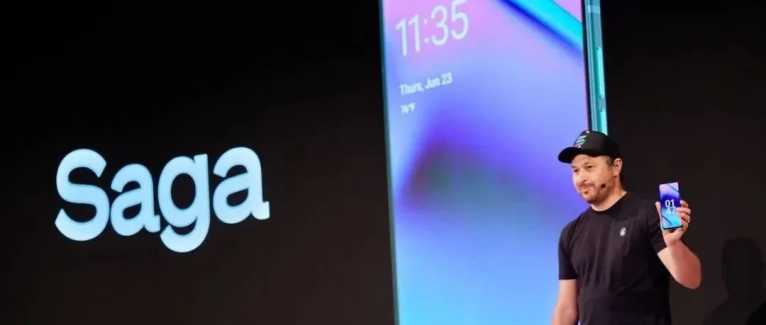
As blockchain technology continues to develop, Saga, as an emerging blockchain project, is attracting more and more attention. Whether or not you will be airdropped any $SAGA tokens, this is a project and ecosystem that deserves your attention. Saga is revolutionizing Web3 and making it easier to produce quality projects.
What is the Appchain Theory?
Before diving into Saga, it is very important to understand the Appchain theory. Creators can directly use Ethereum, Solana, or other layer 1 blockchains to publish dApp projects. However, more and more developers choose to publish their products as independent L1s specific to applications for the following reasons:
Reduce the risk of chain failures: Developers do not have to worry about whether the blockchain they rely on will stop running, perform poorly, or require high gas fees for a single transaction.
More efficient product monetization: Appchains can adjust settings and functions according to different needs, such as faster, safer, or more special, to avoid waiting for updates that will never come.
Independent resource management: Application chains can independently manage resources such as network bandwidth, storage, and computing power to ensure efficient performance without competition between dApps.
In short, application chains are specialized chains that focus on specific tasks and perform these tasks more efficiently than dApps on smart contract platforms. However, application chains often lack the necessary level of security and can be quite expensive, especially for small developers who lack fund support.
Saga: The concept of one-click chain launch
Saga is a chain that enables developers to effortlessly deploy a dedicated blockchain (called "Chainlets") with a single-tenant virtual machine, fully configured validators, and an optimized incentive security structure. It functions as blockchain-as-a-service, similar to launching smart contracts, which simplifies the process for any developer. Similar to AWS simplifying web application hosting for Web2 companies, Saga aims to provide the same service for blockchain and Web3 projects.
Why choose Saga?
Saga has several key features that make it a competitive product for any developer who wants to build a great project:
No upfront costs to launch a new L1: Saga simplifies this process by providing the infrastructure to launch a chain for you. This is similar to renting your own server on AWS.
Predictable developer pricing: Developers rent a chainlet and choose the time frame and specific block space based on the application they will deploy, making the pricing of chainlets predictable.
Competitiveness and performance: Chainlets are application-specific shared security chains with high throughput, independence from other applications using Saga, easy upgrades, and congestion relief.
No network fees for end users: Saga puts monetization in the hands of developers, allowing them to decide how to generate revenue from their projects. Users do not need to pay directly to the Saga chain as a backend provider. In addition, Saga's token model allows tokens of other protocols to accrue value even if the Saga chain is used as a backend.
Interchain security and chainlets: Chainlets are secured by the Saga blockchain and its validators through a mechanism called interchain security, which is a well-known shared security system in Cosmos. Interchain security means that one blockchain (here Saga) provides security protection for other smaller blockchains (here ephemeral chains). Therefore, ephemeral chains inherit the advantages of sovereign blockchains, but outsource block verification and validator setup to Saga.
Interchain security comparison between Saga and Cosmos Hub
Saga and ephemeral chains use almost the same code as Cosmos Hub and its consumer chains, but they have two key differences:
Configuring ephemeral chains on Saga is permissionless and automatic.
Cosmos Hub provides flexibility to developers, while Saga restricts developers from freely deploying any Cosmos SDK code they want.
Ethereum and Ethereum Chainlets
Saga can set up Chainlets to inherit Ethereum's security, which is similar to other rollups. Ethereum has multiple scalability solutions, such as Zk Rollups and Optimistic Rollups, each with its own advantages and disadvantages. Saga aims to combine the advantages of these solutions and launch Optimistic and ZK Ethlets. These Ethlets have the advantages of Saga Chainlets, such as configurability, speed, and cost-effectiveness, as well as Ethereum security.
New Monetization Models
What’s interesting about Saga is that it allows developers to explore new monetization models that were not possible before. End users are abstracted from network fees, and developers can implement more flexible
Monetization methods: Developers can implement standard gas fees, but also have the flexibility to use any IBC-denominated token they like.
Developers can also implement subscription services, where only whitelisted users (subscribers) can use smart contracts.
Developers can also choose to provide products for free to end users and monetize through other channels such as advertising.
How is the cost determined?
Saga has no fixed “cost” to launch and protect a chainlet. Instead, the cost varies based on the specific needs of the chainlet (such as block space and VM requirements) and the rate at which validators provide services for a particular chainlet. Saga uses a mechanism known as “musical chairs”, where validators compete to provide the best (cheapest) service to their clients (developers). This promotes constant competition between validators to effectively optimize the service and provide it at the lowest possible cost.
$SAGA Airdrop
The first phase of the $SAGA airdrop has ended, and users will receive tokens after the mainnet is launched. However, the $SAGA airdrop is far from over! There are 5 more phases to come. In the first phase of the airdrop, many users missed the claim, which is also an aspect that most people ignore. Please be sure to stake your SAGA, because this may be the standard for a "real" SAGA airdrop.
Conclusion
As an emerging blockchain project, Saga is changing the Web3 ecosystem through its unique application chain theory and innovative technical architecture. Whether you are a developer or an investor, Saga is a project worth paying attention to. It not only simplifies the development and deployment of blockchain projects, but also provides developers with more monetization options and more efficient performance.